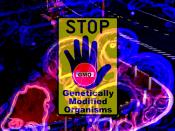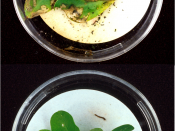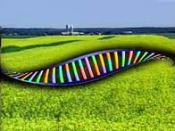CONTENTS
1TABLE OF CONTENTS
ABSTRACT 2
1. INTRODUCTION 3
1.1. Background of Genetically Modified Organisms 3
1.2. Definition of Key Terms 4
1.3. Purpose of the Report 4
1.4. Thesis Statement 4
2. METHODOLOGY 5
2.1. Direct Methods 5
2.2. Indirect Methods 5
3. FINDINGS and ANALYSIS 6
3.1. Understanding GMOs and Their Use 6
3.1.1. Specifications of GMOs 6
3.1.2. Uses of GMOs 7
3.1.3. Contained Use 8
3.2. Why GMOs are Different and Regulations for Them 9
3.2.1. The Reasons for Genetically Modified Organisms' being Different 9
3.2.2. Reasons to Control Regulations about GMOs 11
3.3. Debate on Genetically Modified Organisms and Their Future 11
3.3.1. Main Issues in the GMO Debate 11
3.3.2. GMOs and Scientific Responsibility 13
3.3.3. Results of GMOs 13
4. CONCLUSION 14
REFERENCES 15
�
ABSTRACT
The purpose of this study is to investigate a comprehensive analysis on genetically modified organisms. In terms of the requirement of the subject, we will emphasize on the nature of these organisms and analyze the fact that the production of appropriate genetically modified organisms (GMOs) offers considerable opportunities for more efficient and more effective aquaculture across a wide range of species.
Although this potential is being realized in crop production with over 60 million hectares under cultivation, there has been no commercial use of GMOs in aquaculture. Here in this study we review the nature of GMOs, the range of aquatic species in which GMOs have been produced, the methods and target genes employed, the benefits to aquaculture, the problems attached to the use of GMOs and the regulatory and other social frameworks surrounding them. We conclude with a set of recommendations aimed at best practice and will see the fact that although genetically modified organisms (GMOs) in agriculture have been available...


